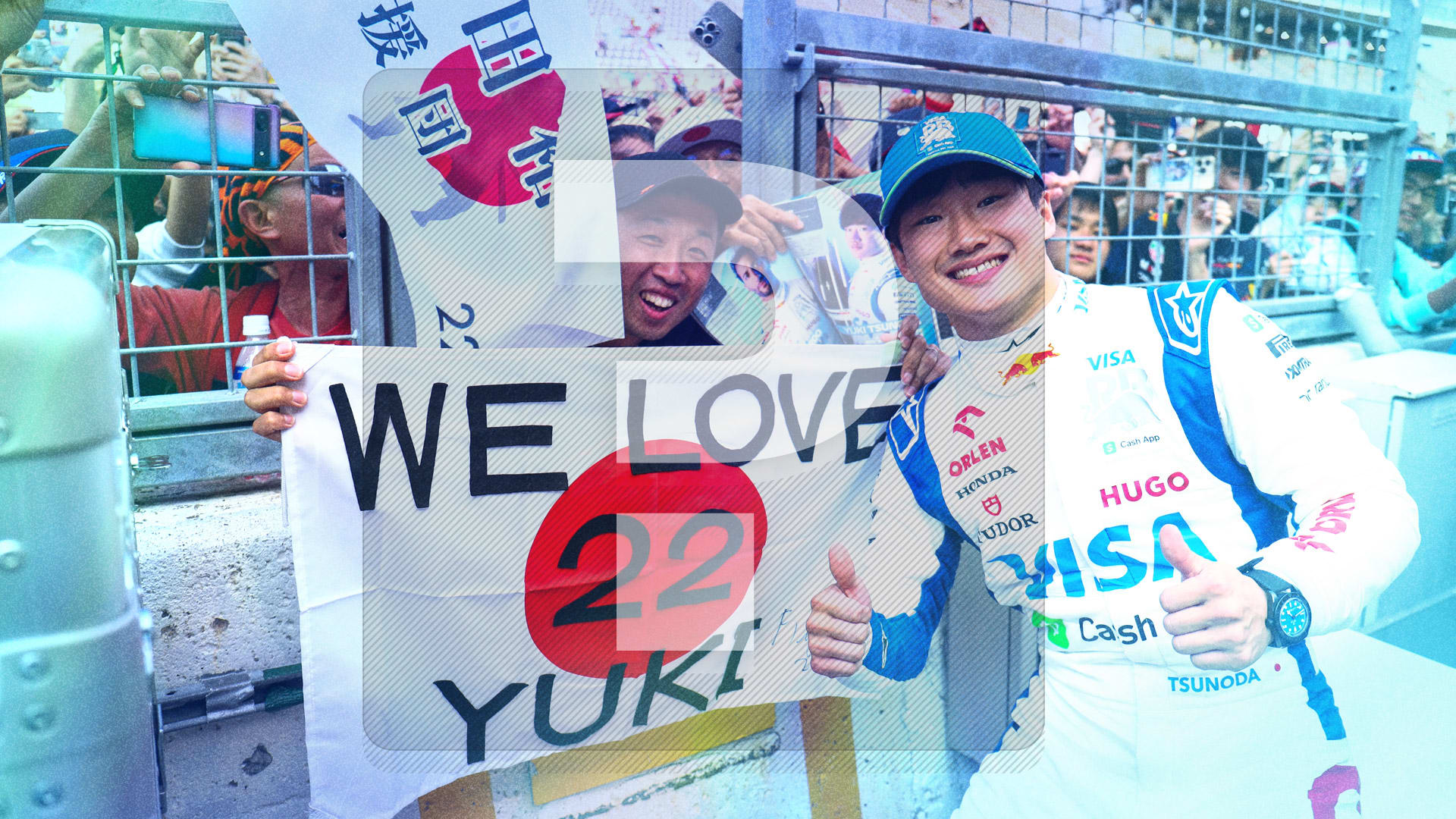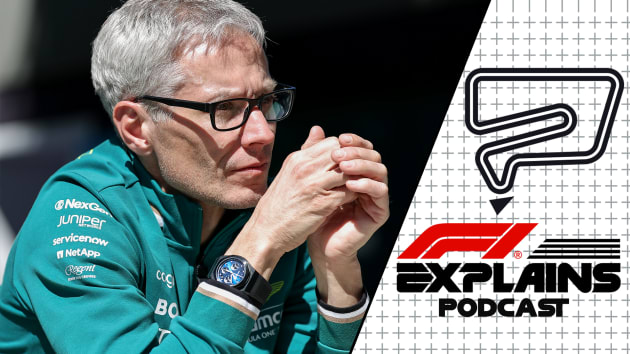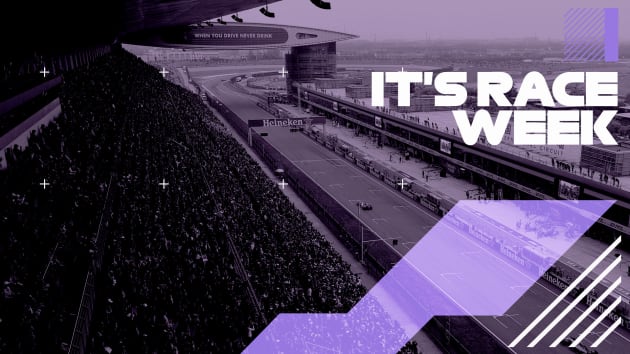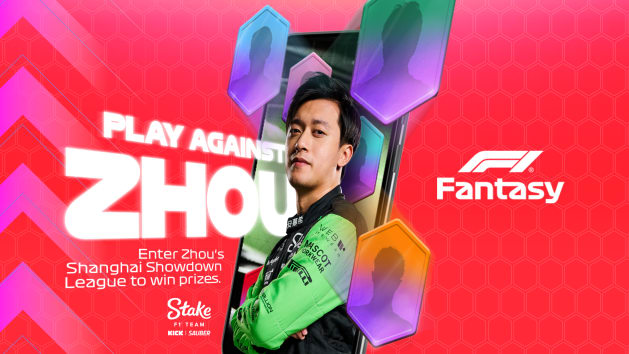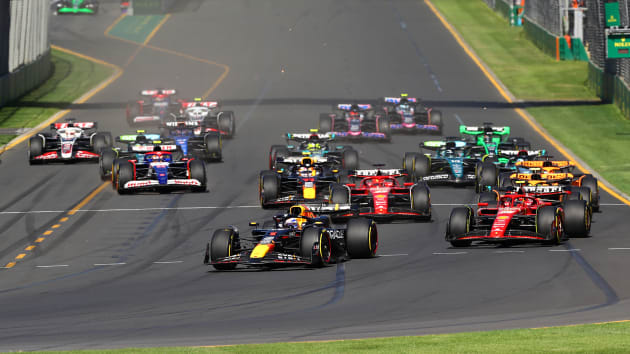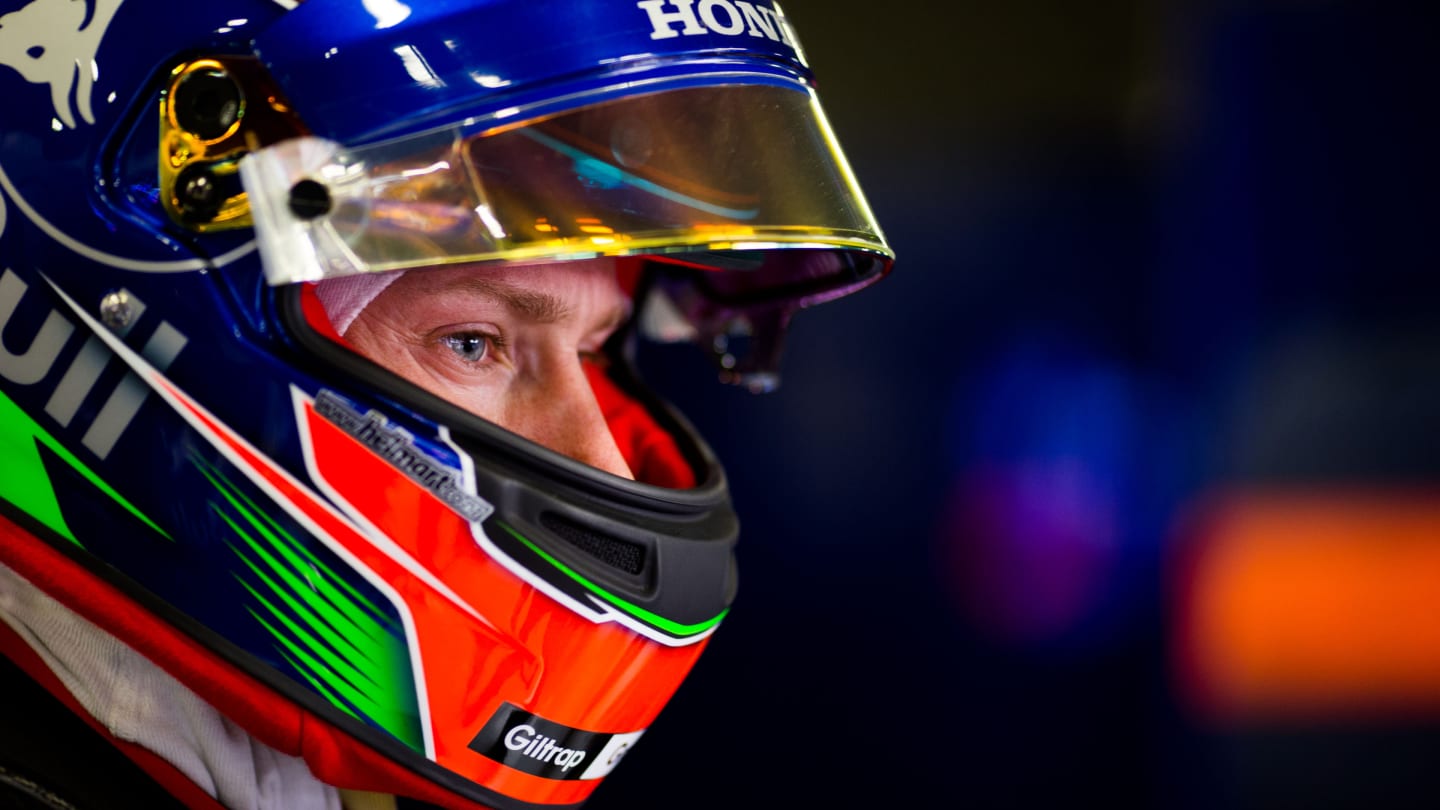
Feature
Introducing Brendon Hartley - THE ROOKIE
Toro Rosso driver
Brendon HartleyShare

There’s nothing quite like being a rookie in F1 – just ask Toro Rosso’s Brendon Hartley. And this season, as the Kiwi negotiates his first full year at motorsport’s top table, we’ll be with him every step of the way, on track and off. In the first part of an exciting, new, first-person content series, produced in association with The Players' Tribune, Hartley gives us an eye-opening insight into his remarkable career to date…
This feature is currently not available because you need to provide consent to functional cookies. Please update your
My heart rate is the internal metronome I use to keep myself at the right tempo.
Racing is chaotic. I’m essentially strapped to a small, gorgeously-designed missile. I’m thinking of a million things while trying to be just one: fast. The skill in driving race cars comes from balancing the madness on the track with an internal state that's the complete opposite: I have to be sane. I have to be still. I have to be calm.
And my heart rate will let me know if I’m where I need to be. I trust it. It rarely fails me.
But it has. Just once, I think.
It happened in October 2017 and it wasn’t even on the track.
It was early in the morning, and my phone buzzed.
“CALL FROM: Helmut Marko.”
When I was in the Red Bull Junior Program eight years ago, whenever Helmut – who heads the program and is one of the most influential men in all of Formula 1 – called it meant bad news. He would ring me when I had a bad result in a junior series, and he was the one who let me know new about my contracts. He’s a man of few words, and, at times, even fewer nice words.
Helmut was honest, though – I appreciated that. I had maintained a good relationship with him and the entire Red Bull Racing Team after we went our separate ways in 2010. I was driving in the WEC for Porsche now and it was the middle of the season, but still, staring at my phone that day my heart rate started to go up. It was a force of habit from my younger days, but there was no need for it anymore. I was grown up, a world champion who had Helmut’s respect.
He said, “We want you to come have a day on the simulator at Red Bull Racing.”
I took a breath, “Sure, I can be there.”
That was it. I didn’t ask any questions. I knew Helmut wouldn’t provide any answers. In my mind I wanted to believe it had something to do with F1, but I really had no idea. I was 28, and I thought maybe my chance to race in F1 had passed. I had never given up – why would I? Giving up doesn't accomplish anything – and while I knew this chance in the simulator could be something, it could also be nothing. I didn't even know who else they were testing. I was just excited to get a chance to show Red Bull what I could do with an – albeit virtual – F1 car in my hands. I wasn’t going to waste it. I had been so close in the past.
And it had been a long journey just to get that far…

I have this memory of standing on a podium after I won a go-kart race in New Zealand. I must have been seven years old. I was wearing a Jean Alesi shirt my dad had bought for me. Alesi was my guy. His racing number was 28. And so, coincidentally, was mine. My dad, when he raced, was number 28 – same with my older brother, Nelson. And Alesi drove that beautiful red Ferrari … that was enough for me to be a fan.
So on the top of the podium I proclaimed to the crowd: “I’m going to be Jean Alesi one day!”
I must have looked like such a brat. I mean, what a ridiculous thought to have. I was racing go-karts for fun around the North Island. F1 … well, F1 might as well have been a planet away.
That’s who I was, though. I was uber-competitive and confident. Even from my first experience in a go-kart, I knew I hated to lose. I was six years old when my dad let me in one of our family karts. I was entering a race with my brother, who is four years older than me. The days before the race we had a few test sessions, and I was noticing that Nelson was carrying a lot more speed than I was able to. Being the kid I was, I assumed it wasn’t a skill thing. He must have a faster kart than me, I thought. So when we got home from testing, I snuck into the garage to compare the set-ups of both karts. I realized I had different gearing and a few other parts that were not the same, which was causing an issue. I went straight to my dad. I threw a big fit – hand waving and all. Nothing came of it; he was the boss.
Nelson lapped me the next day, nothing to do with the gearing of course.
And because he was older, that was the only time we’d ever race against one another. That feeling I felt when he went by me – I remember it vividly. I was just overcome with this passion and drive to be first. That’s when I realized how competitive I was.
So maybe, in hindsight, that Alesi statement was a challenge I gave myself.
As I boy, all I knew was school, our family workshop and racing on weekends. My mum and dad and brother still run our garage, which builds and designs race engines in Palmerston North. After class, I was in there tweaking my kart for the upcoming weekend. If you asked my family, they’d tell you I didn’t know a screwdriver from a crescent wrench, but I’m telling you, I got my hands dirty when I needed to.
Those were my weekdays. On weekends, it was about being at the track all day – long, hot, New Zealand days. The only thing I could smell for 48 hours was a mixture of oil, gas and exhaust. I’d be drenched in sweat before I even got in the kart. My family didn’t have a lot of money. We brought karts we built with our own hands, we ate mince pies in the sun between sessions and we raced our hearts out. That’s what it was all about. Like I said, I told people I was going to be an F1 driver, but I drove because it was fun. That has never changed.
This feature is currently not available because you need to provide consent to functional cookies. Please update your
My brother and dad really opened up a lot of opportunities for me, because Nelson was older so he was essentially the guinea pig. They would tune a go-kart or later the Formula Ford car for four years, then I would hop in it. They did the legwork, and I did my best to take advantage. I raced in our family-oriented team until I was 15, when I joined the Toyota Racing Series.
During my success in Formula Ford I got great support from a group of local Kiwis who even set up a shareholding platform to fund my racing going forward. They believed in me, and I signed a management contract with them at 14. My supporters had some strong contacts in America, but as the racing became more intense, we were running out of money. We eventually stumbled across Helmut Marko’s email address. We sort of knew who he was, we just didn’t quite know how big of a deal he was. So we sent him an email. I think we asked for $10,000 in sponsorship money – we were desperate. We had seen some Red Bull helmets around at some races and figured he might be watching.
He was. Or someone at Red Bull was. Because a few weeks later we received a contract in the mail. At 15, I was flying to Estoril, Portugal, to test with other kids to be part of the heralded Red Bull Junior Program.
This wasn’t go-karts in the sun with Dad. This was the big time.
It was a chance to take a step toward a dream I had always been chasing, even if I didn’t fully know it. I did well enough, and a few weeks later I moved to Europe, alone. I left Mum, Dad, Nelson and the workshop behind.
In 2007, my second year away from home, I won the Eurocup Formula Renault 2.0 championship. It was a strong field with more than 35 of the best drivers from all over the world. I was happy. And in 2009, I became a reserve driver for Toro Rosso, Red Bull’s sister team in F1. I was one injury or illness away from racing an F1 car. That close.
And that’s when it all began to fall apart.

I was racing in two other European series as well as attending F1 races and staying prepared to step in the car at any moment. I was 19. I was exhausted. I was lost. I didn’t know my place in the paddock. I didn’t know what was expected of me. Mentally, I just wasn’t ready. I was quick. I knew I was quick, but … I was in my own head. It affected my results in the other two series – which is the only place you can prove yourself as a test driver. I lost confidence and ultimately became very unhappy and burnt out.
When Toro Rosso’s F1 seat opened up in 2009 my downward spiral had been ongoing for a while. Red Bull noticed, and they gave the seat to Jaime Alguersuari. I’ll never forget that phone call with Helmut when he gave me the news.
“I’m sorry, we’re putting Jaime in for the race seat.”
A man of few words.
It was heartbreaking. To be that close … I mean, I was the reserve driver. I was next in line. But my results weren’t good enough. I understand it now, but back then, I handled it so poorly. My confidence was shot. My mind went to a dark place … I didn’t know what to do. Less than a year later, Red Bull pulled my funding, and all of sudden I had no money and no team to race for.
If I wasn’t a racing driver, who was I?
But I had already hit rock-bottom when I missed out on the F1 seat. So when Helmut called to tell me they were taking away my drive, I felt ... relief. I had a fresh start. I had to figure life out on my own – it invigorated me.
Looking back, I’m so thankful to have had my now-wife, Sarah, with me in Europe. She saved quite a bit of money when she was 18 to move to the UK, where I was living as a reserve driver, to be with me. She was my rock. I leaned on her for everything. Without her, I’m not sure where I would be today. Same goes for my family and my support group back in New Zealand. I didn’t realize, maybe as much as I could have, how crucial they’ve all been in my career.
When I began to get back on my feet, I leaned on them all for moral and financial support. Racing was my life. I had come too far – my family had sacrificed too much – for me to give up.
So Sarah and I saved money, (she worked in a restaurant and I had a day job in the simulator for Mercedes’ F1 team), and we had the idea to go to an LMP-2 testing day in France before the season started in 2012. I knew I just needed a chance to show somebody what I could do.
I brought three things: My race suit. My helmet. And a bank account routing number to wire cash to a team.
Most of them already had tests lined up, so I knew I’d have to pay to get track time. I walked up and down the paddock introducing myself to every team owner for an hour trying to get anyone to give me 20 or 30 laps in their car – I was going to stay there as long as it took. Finally, a team called Boutsen Ginion, gave me a chance. It wasn’t glamorous, but it worked.
That was the beginning of the climb out of a dark place. Over the next few years, I fell in love with endurance racing. I got better at it, too. There’s a world of difference between single-seater racing and endurance racing. From the relationship with your team mates to the uniqueness of driving for lengthened periods of time – it’s truly its own sport.
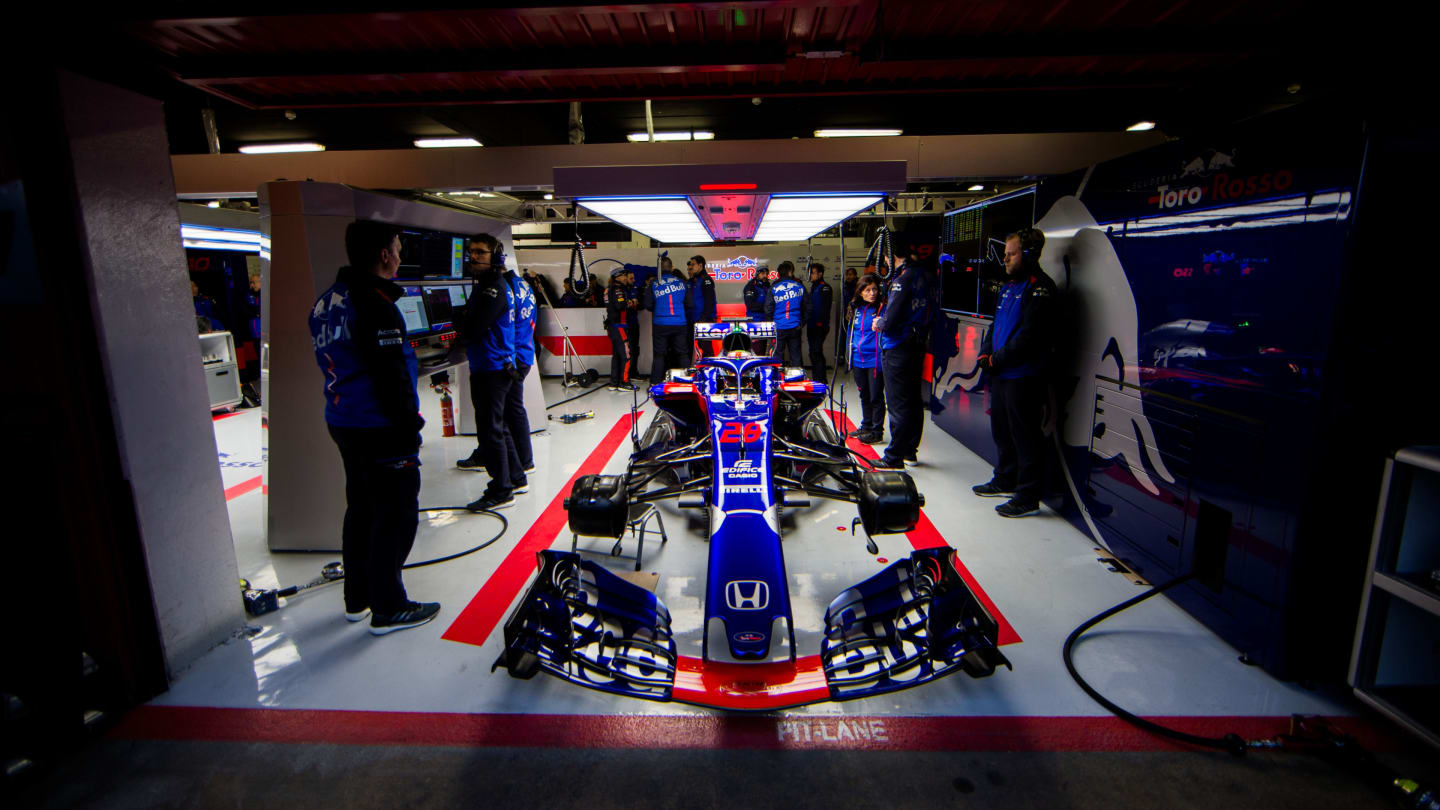
People ask me all the time if my desire to be a Formula 1 driver ever faded, even after winning LeMans and two WEC World Championships with Porsche. The short answer: No. But it’s complicated. My time in endurance racing was phenomenal. I loved driving with Mark Webber, Timo Bernhard, Earl Bamber and all the teammates I had. That’s why it was so difficult to stomach the news that Porsche was ending its endurance racing program at the end of the 2017 season.
My mind went right back to that moment when I lost my Red Bull contract.
I was at a crossroads again. So I did what I had done before: I reached out to Helmut Marko.
I said, “Helmut, I’m a different man than I was eight or nine years ago, and if there’s ever an opportunity, my hand’s up and I’m ready to go.”
Helmut didn’t say anything – radio silence. I pushed again, telling him where I was at in life and all of these other things. He cut me off.
“O.K., I got the message.”
A man of few words.
I hung up the phone thinking that if I was going to be a Formula 1 driver, it hinged on the results of that call.
I didn’t hear anything for a few months. Then, my phone rang, my heart rate picked up and I was on my way to the UK to drive in the Red Bull racing simulator. And two weeks after that I was in Austin for the US Grand Prix. Finally, a Formula 1 driver.
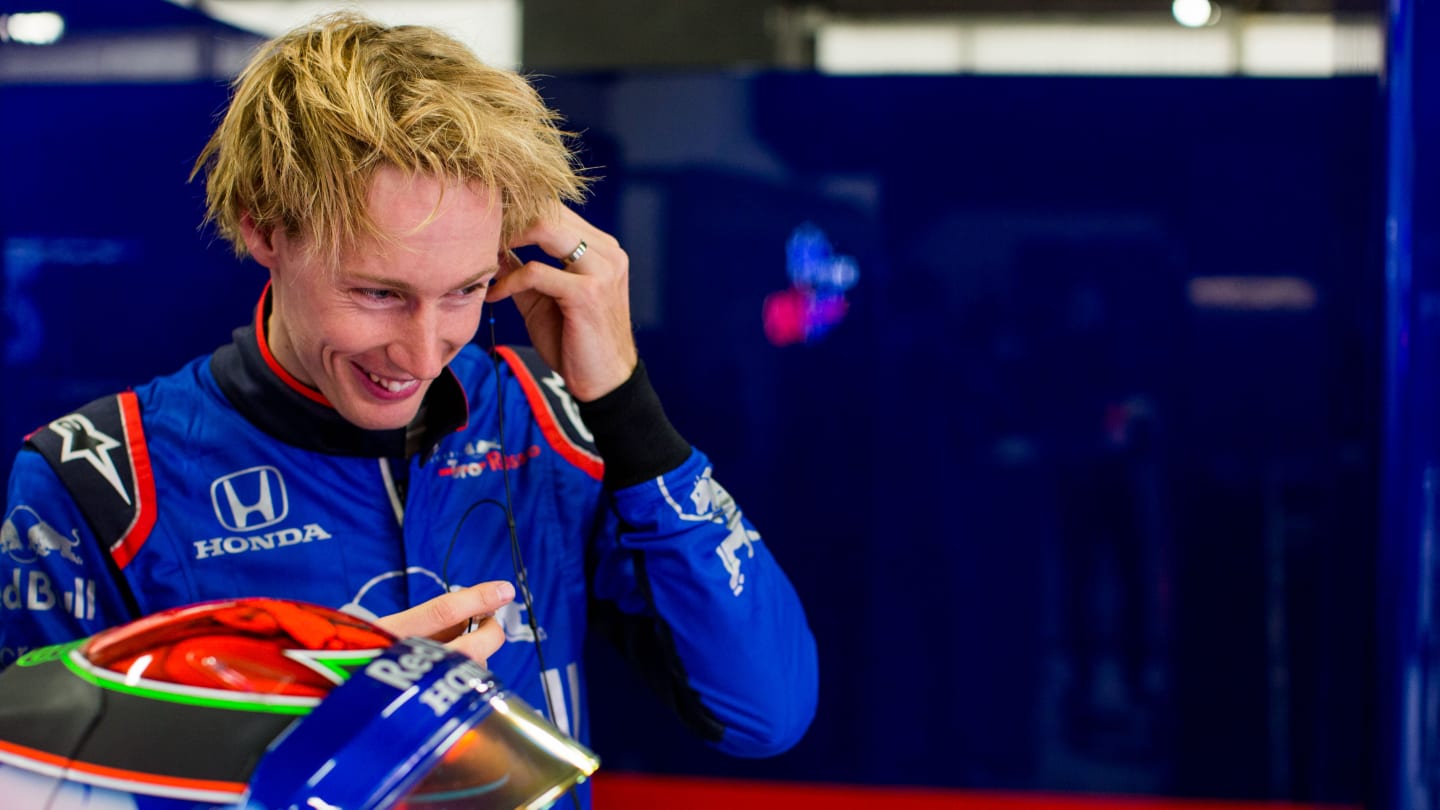
There was a lot of new, thrilling sensations that came with being back in the paddock, but nothing compares to getting back in the car for the first time.
When the engine fires up and there’s 900 horsepower behind you … goosebumps. It was a bit wet when I first got on track on Austin, but once it dried up and I could open it up a bit, yeah, it was proper insane. The first time through the “S” section in Austin I was just hanging on for dear life. My head felt like it was about to be ripped right off my neck. These modern F1 cars are just scary fast. The big tyres, the downforce – they’re monsters in the high-speed corners. It was awesome. Just flat out awesome.
Those last few weeks of the F1 season were a blur. I tried to learn as much as I could and acclimate as fast possible. I’m so incredibly thankful to Red Bull and Toro Rosso. From Helmut, to the people in the factory in Faenza, everyone has been so supportive.
Last year, I never had time to decompress and actually poke my head up out of the clouds and see where I was. This off-season, I’ve been able to do that. To be the first Kiwi in F1 since 1984 is a tremendous honour. It still, in some ways, doesn’t seem real, you know?
Brendon Hartley, F1 driver. Even now, I have to read it a few times before I believe it.
I’m not taking any of this for granted. I know exactly how hard it is to get here and what a seat in this series means. I hope I can bring pride to my family, my wife and everyone who was there for me when I needed them, proud. And to my Toro Rosso team: Let’s go have some fun.
I know I’m going to. I am a rookie after all.
All images: © Red Bull Content Pool, except karting shots © Brendon Hartley
For more information on Toro Rosso, click here.
For more information on The Players' Tribune, click here.
Share
YOU MIGHT ALSO LIKE
